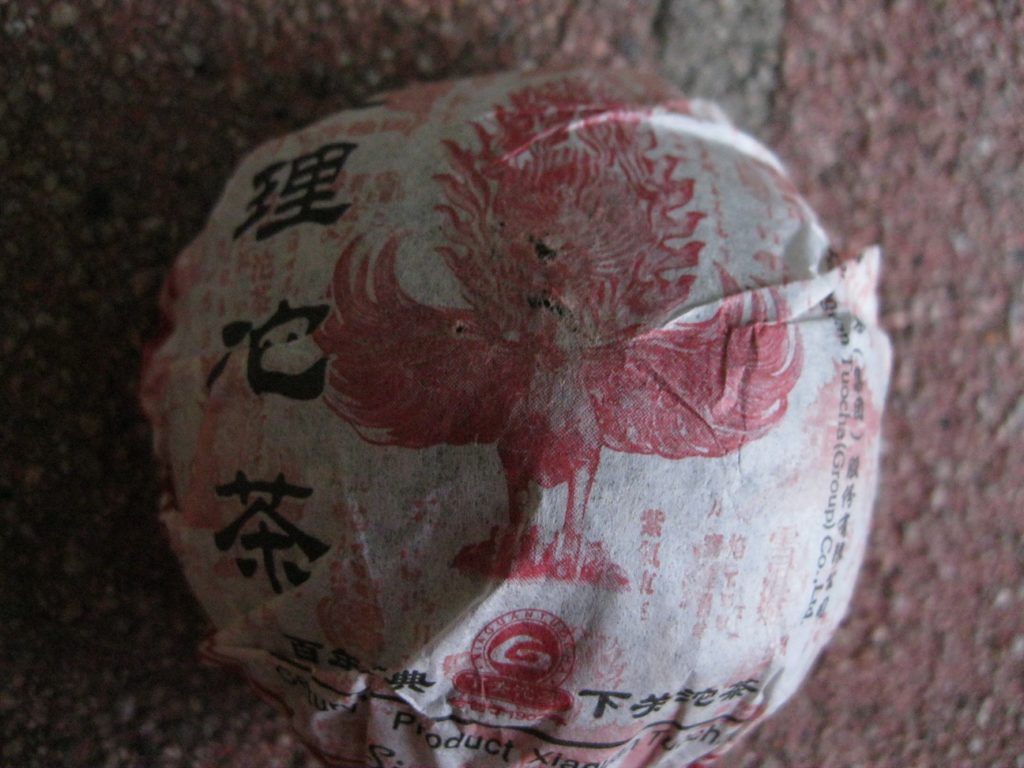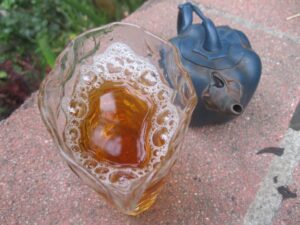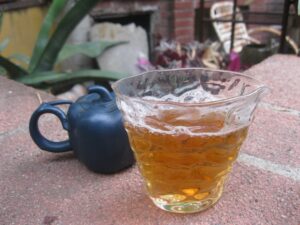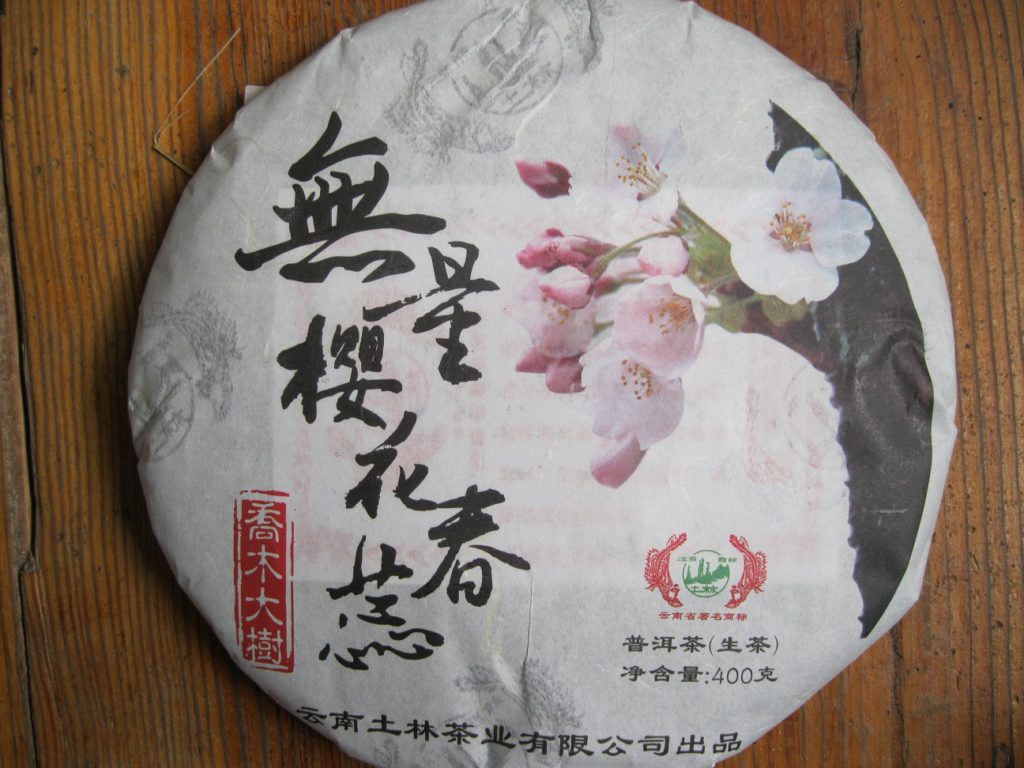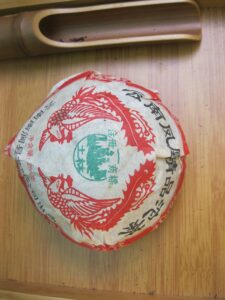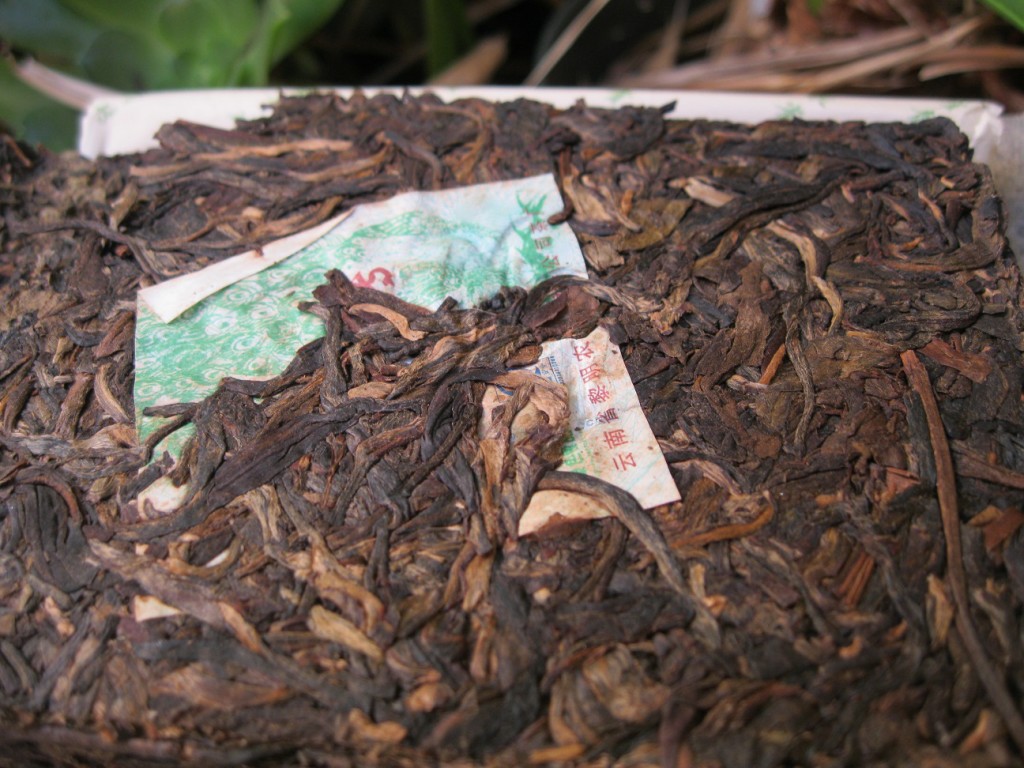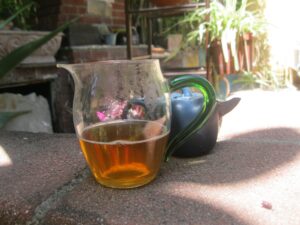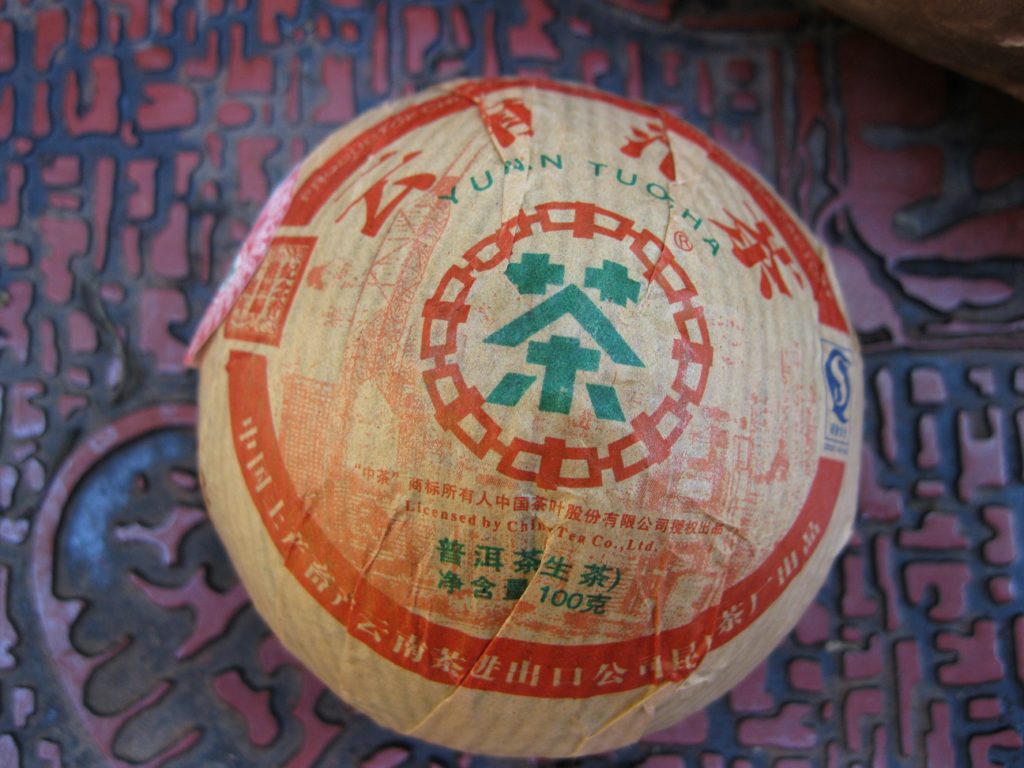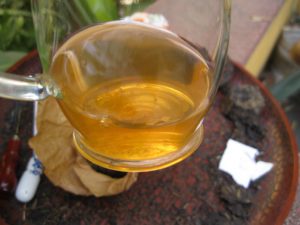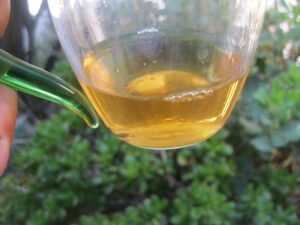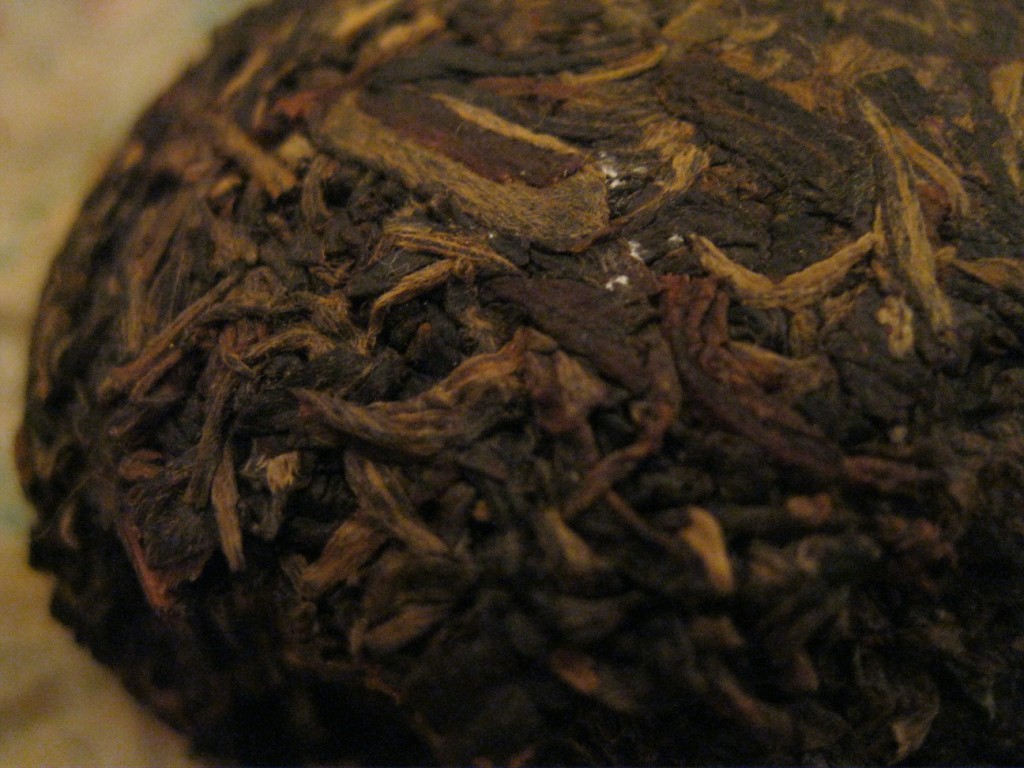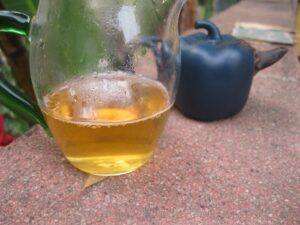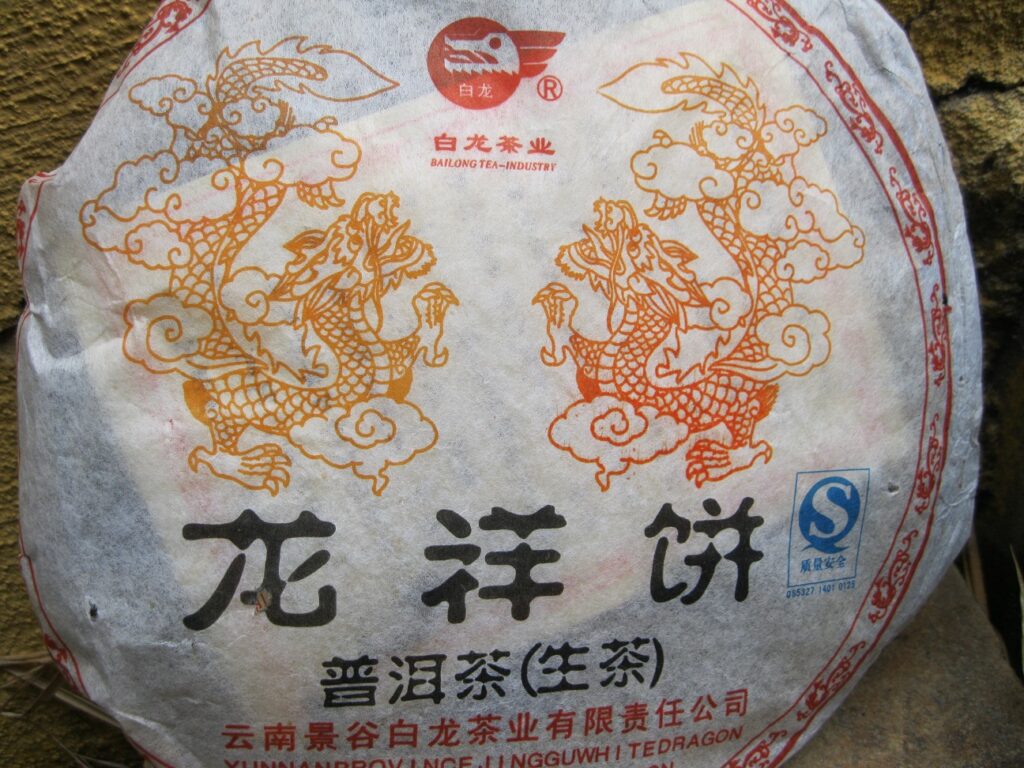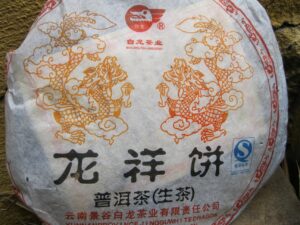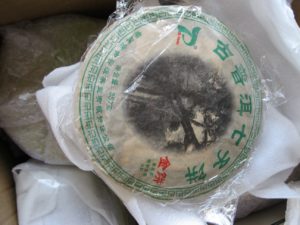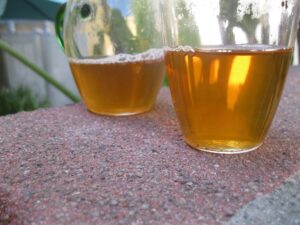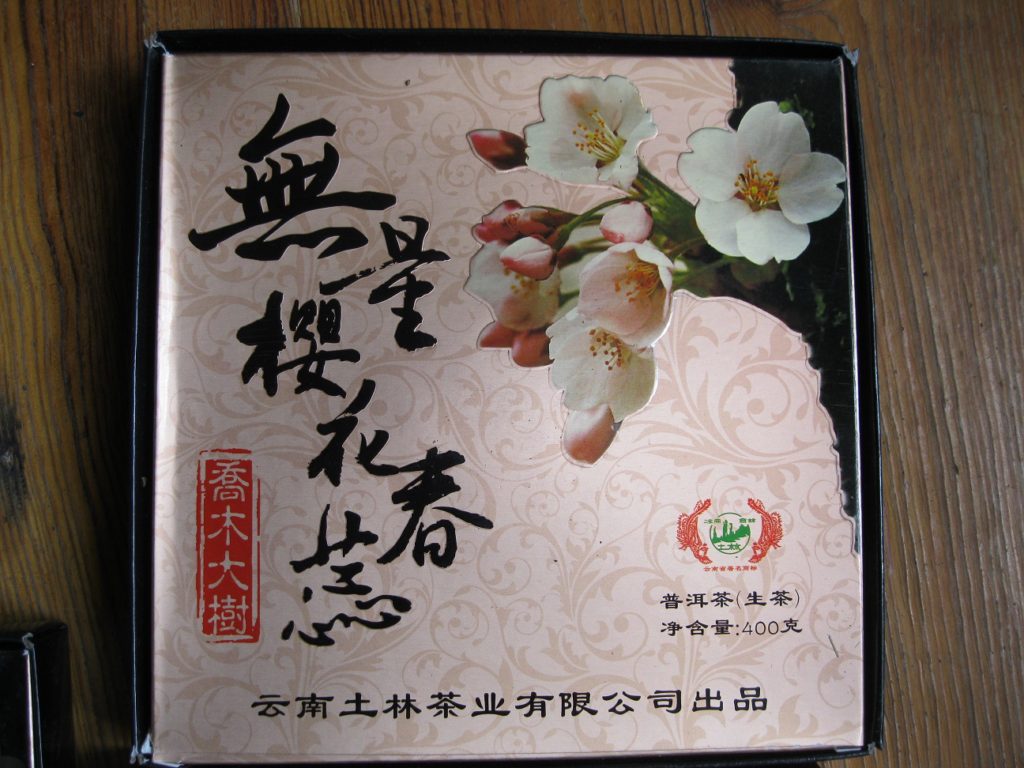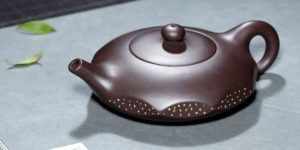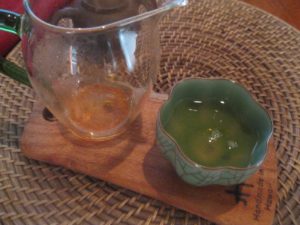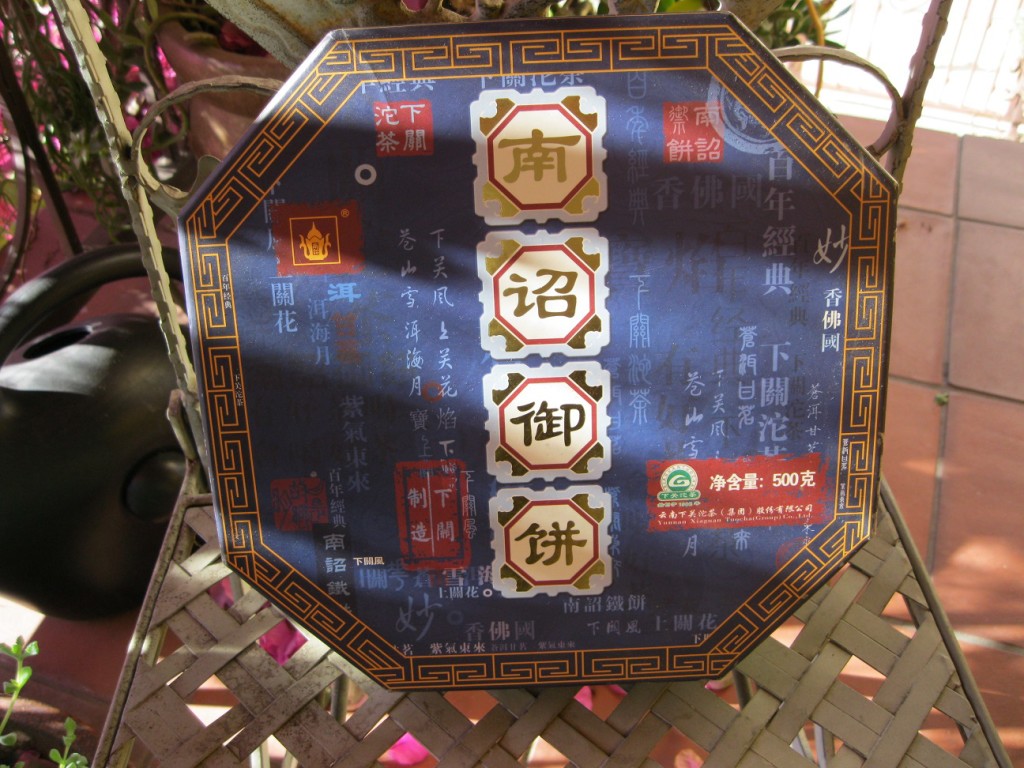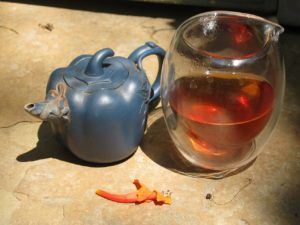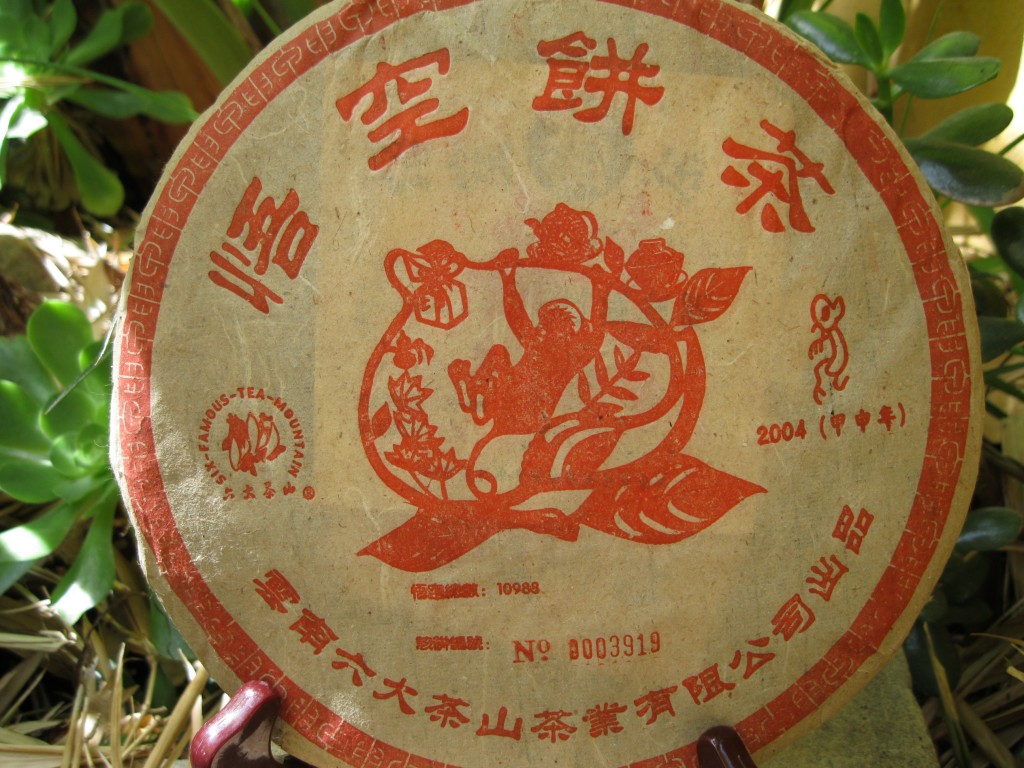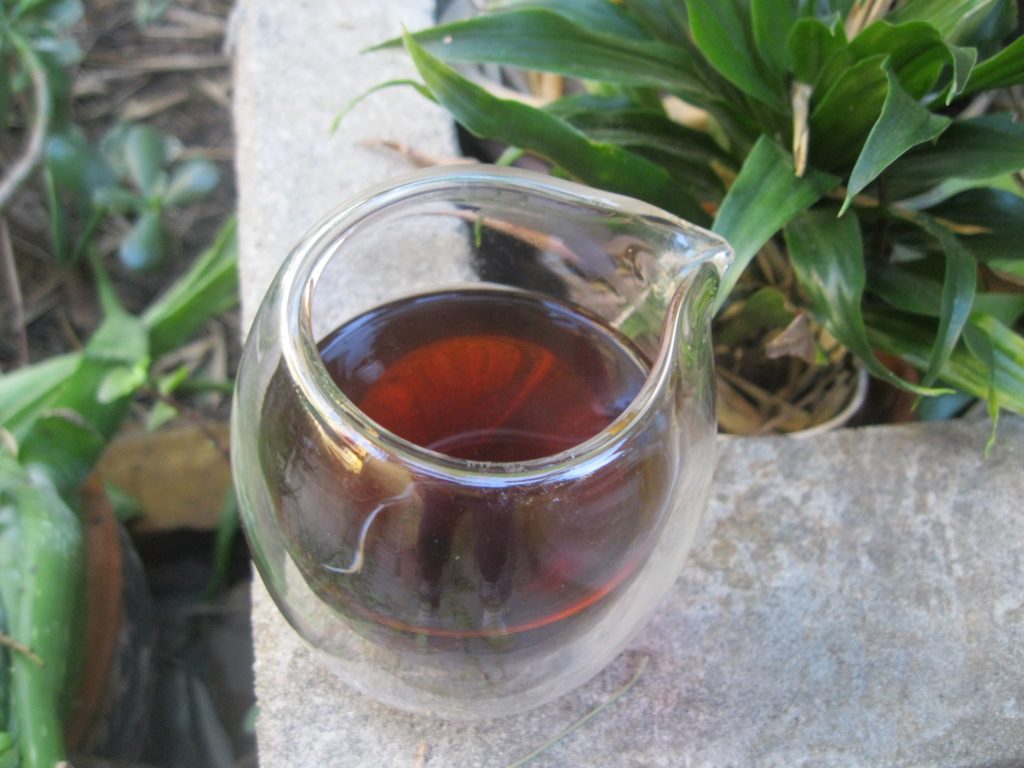Awkward Teenage Puerh
Awkward Teenage Puerh dampens any puerh tea session. This morning such was my misfortune with the ’08 Dali Tuo, XG. On a high note, at room temperature this production tastes perfectly pleasant, spicy sweet. On a low note, at warmer temperatures it struck me as being thin.
I used close to a nine gram chunk for my eggplant pot, 150ml. I gave the first two infusions generous amounts of time and the richness of colour had me expecting an experience with a much fuller mouthfeel. Having this tuo on the heels of the ’06 Peacock Brick earlier in the week brings the contrast in mouthfeel between the two into sharp relief.
Interestingly, my experience drinking the Dali Tuo was like none I can recall having with puerh. The colour, taste, and texture reminded me of the sugary peppermint tea that N. Africans favour. Often, that will get spiked with Gun Powder tea.
Then comes this sourness that reminds me of an earlier stage with the Tippy Tuo. In the case of Tippy Tuo, the sourness was even stronger but a couple years thereafter it blossomed into something remarkable. My experience with Xiaguan’s transformation under LA conditions has been positive. The ’10 Nanzhao tuo was positively wretched before maturing into an intensely camphorous, dark, and sweet medicine. That tuo never exhibited any sourness, rather there was an awful dank-like taste that I’ve detected among many Xiaguan offerings. This points to fermentation and additional processing methods at the factory and not storage through its numerous vendors.
This recent turn with the Dali Tuo comes just on the heels of better than two years tracking a vendor this March 2020. The first purchase was made better than four years ago after running into this article.
As I mentioned, I used close to a nine gram chunk. After about the third pot I started getting that existential anoui from drinking on an empty stomach. Higher leafage raises gut-busting potential considerably most puerhs. This is definitely the case with the Dali Tuo.

